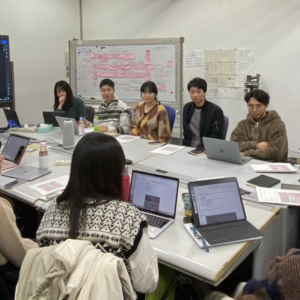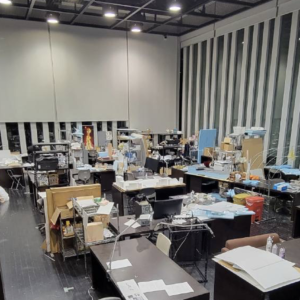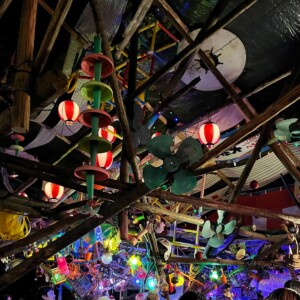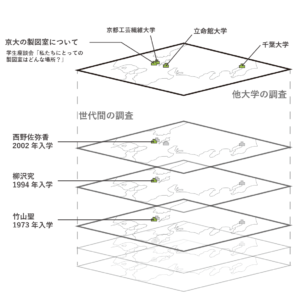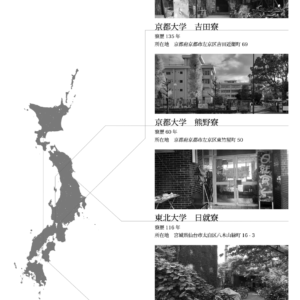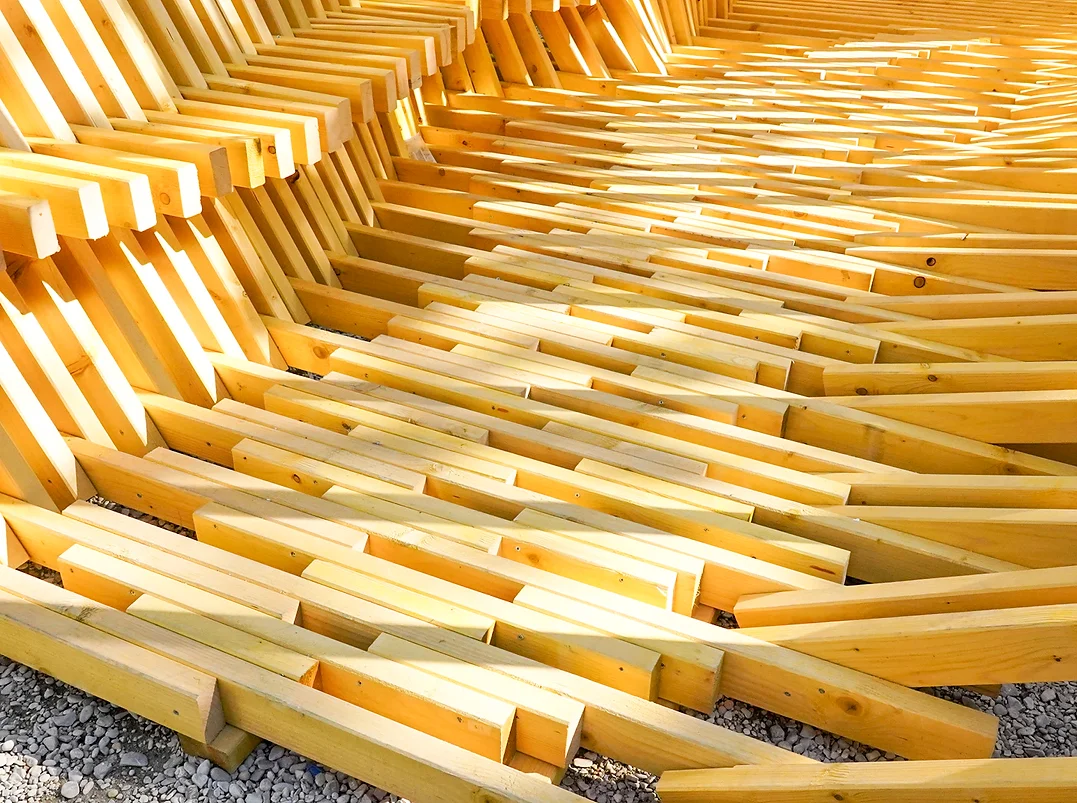
【ダニエル研究室】Paris Tea Pavilion
Studio
The students designed the pavilion over the course of one semester, moving back and forth between hand sketches, digital models, and physical models. The first task was to study precedents in tea house design, specifically the okoshiezu (fold-up drawing) design method used by sukiya carpenters. Students experimented with this technique in order to understand its inherent spatial and geometric possibilities or limitations, and to begin developing a tea house design appropriate to a European site in the twenty-first century. The final okoshiezu proposals were primarily investigations into surfaces, with an origami-like expression that negotiated the possibilities of unusual spaces in dialogue with the ergonomic, functional, and symbolic aspects of the tea ceremony.

Tea house okoshiezu diagram, taken from Arata Isozaki, MA: Espace-Temps au Japon (1978)
Following the okoshiezu exercise, the students were placed in groups that contained members of each of the three schools, to begin developing actual design proposals. Given the budget constraints from the sponsor, the practical constraints entailed by having the students themselves build the pavilion, and the necessity for rapid assembly and disassembly, it was decided to limit the allowable materials to several hundred pieces of 100 x 50mm timber, with appropriate hardware fixing elements, while allowing for the possibility of additional lightweight, inexpensive materials such as rope, fabric, and bamboo. The okoshiezu experiments with surface elements were thus superseded by investigations into applying linear elements to define architectural form and space. Given that timber is rarely used for architectural structures in France, this also provided an opportunity for students to investigate traditional Japanese carpentry details, and then introduce them to the French audience.



The rest of the semester took the form of a tournament, in which the less compelling designs were progressively eliminated. At each interim review, a vote was held, for which all professors, students, and guest critics participated. Based on the number of votes that each design received, half would be selected and half rejected. Those students whose designs were eliminated were then asked to join the other student groups: for example, after the first interim review, the groups of four students were combined into new groups of eight students to continue developing the remaining designs. At the final review, the winning design was chosen, again through a democratic vote. Creativity, originality, and beauty were important criteria, but the decision was ultimately based on which design would be most feasible, given the available time, budget, and labor. Among other issues, the pavilion had to be demountable, with the intention that the materials would be used again in future, for building other variations of the basic pavilion idea.


At the final presentation, there were two remaining designs, with different but very strong approaches to the problem. One proposal was in fact subdivided into a set of smaller pavilions, more or less cubic in form, linked by an irregular, orthogonal pathway. Each pavilion was intended to contain a specific activity, such as resting, viewing, shopping, storage, and the tea ceremony itself. They were also demonstrations of potential timber assembly methods, such as variations in the patterns of louvers, slats, and grids. The allusions and inspirations from traditional Japanese building methods were clear and attractive, though relatively conservative in the final forms.

Second-place winning design
The other design was a single volume comprising square frames that were sequentially aligned but progressively torqued and distorted to create spatial and functional variety. This design had far less obvious relationships to traditional Japanese tea house architecture, and clear influences from contemporary digital design techniques. The final vote was extremely close, but the second design won.
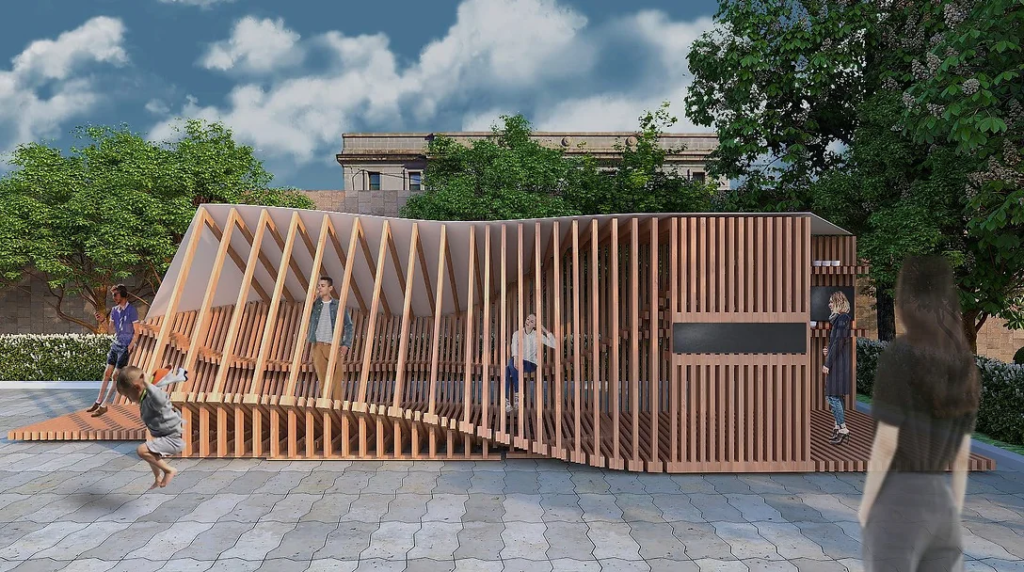
The tournament format created a positive atmosphere of internal competitiveness, rivalry, and effort. Rather than awaiting judgment from their instructors, the students actively debated and criticized the proposals of their peers. Finally, one design had to be chosen and all others rejected, but dealing with the inevitable disappointments and compromises was considered to be part of the learning process.




